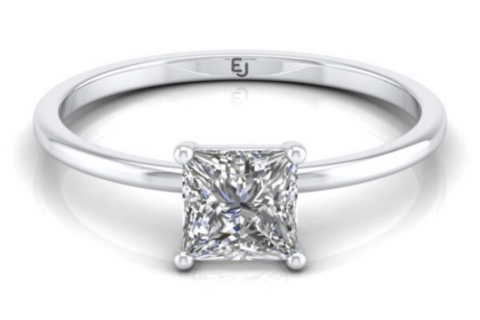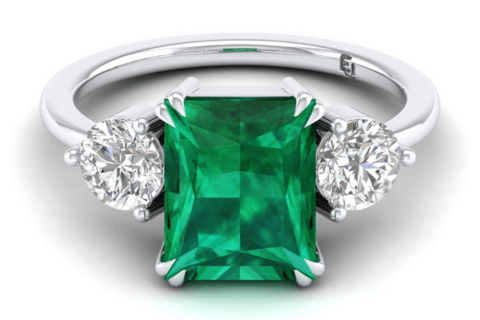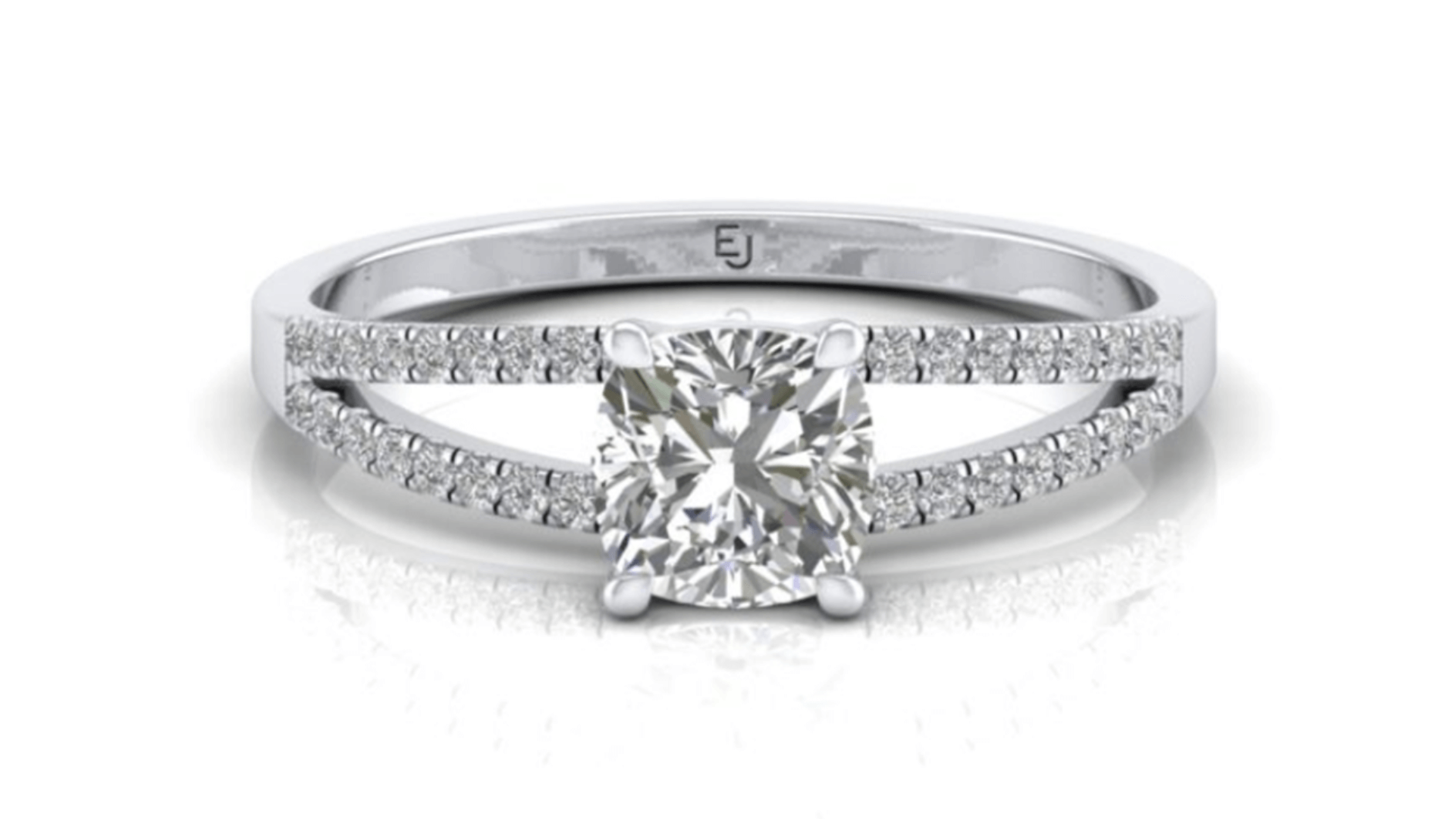You should get a lab-grown diamond engagement ring because it is more affordable than natural ones, despite having the same luster, physical characteristics, and chemical composition. Lab-created diamonds are ethically sourced and also great for environmental sustainability.
So, you have the partner of your dreams, the love of your life. You are certain that you want to spend the rest of your life with them. You know they feel the same way too.
You want to make it official by asking them to marry you. Your heart is bursting with so much excitement at the thoughts of their “Yes!”
What’s left is an engagement ring to propose with. You want the ring to be memorable, beautiful, and something your partner will adore and cherish.
You think a diamond would do or something close. You’ve heard about lab grown diamonds, but you aren’t sure if they can serve as engagement rings.
You have many questions. Would it last? Can people tell it’s not a real diamond? Will it wither and lose its luster over time?
In this article, we answer these questions and more. We provide information about their benefits over natural diamonds and answer if they are worth investing in.
What are the benefits of a lab-grown diamond engagement ring?

When you hear lab-grown diamonds, we can forgive you for thinking something inferior or plastic. But you couldn’t be more wrong. Lab-grown diamonds perform comparatively well against mined diamonds.
The benefits of lab-grown engagement rings include being relatively cheaper, more environmentally friendly and ethical, highly durable, and more customizable than mined diamonds.
In the following sections, we’ll discuss these benefits.
Price
Lab-created diamonds are substantially cheaper than natural diamonds. There are many factors why this is so.
First off, the mining process for diamonds is rigorous and resources intensive. Resources needed include high-powered machinery and a mass workforce, which makes them very expensive to mine and process. The production of lab-created diamonds is not as capital-intensive.
Miners and manufacturers have created mechanisms to protect their investments. For example, there’s a supply cap on the number of natural diamonds in the market per time to keep the price as high as possible. It doesn’t also help that supply is centralized among a few companies and entities.
Russia makes about one-third of the world’s diamonds, with one company, Alrosa, producing 90 percent of those. The De Beers corporation also controls a significant percentage of the world’s production. Production in the lab-grown diamond industry is not centralized.
Additionally, there’s still relatively more demand for mined diamonds than lab-grown ones. All these are factors that make them more affordable.
A typical lab grown diamond is about 30-50% cheaper than a mined diamond with comparative properties. They are also competitively priced.
Environmental factor
Miners have to dig a depth of 150-200 kilometers into the earth to find diamonds. This depth requires removing large quantities of soil, which may alter land topography, particularly around shorelines. Diamond explorations also encroach into animal habitats, which forces animals to migrate.
Mines also drain scarce resources like water. Water is essential during diamond extraction. Water is already a scarce resource in Africa, and diamond mining only compounds the problem. Diamond mining also pollutes surrounding water bodies.
It’s common to find potentially-harmful elements like potassium, ammonia, nitrates, and molybdenum increase in lakes after diamond mines start operating. Additionally, by-products kill off critical parts of the aquatic food chain.
There’s also the issue of greenhouse gasses that the heavy machinery emits. None of these environmental dangers are present during the production of a lab-grown stone.
Ethical and moral obligation
Almost 70% of the world’s mined diamonds come from Africa, where workers’ rights are not protected. Consequently, the story of diamond mining is not as glamorous as the stone itself.
It’s littered with human rights violations, child labor, violence, conflicts, hazardous working conditions, and poor pay. As many as 1 million African workers in the diamond industry earn less than $1 per day.
The violence and conflicts in regions where diamond mining occurs have given rise to the term “Blood Diamond.” Nefarious actors use these diamonds to fund civil wars. Recently, there have been fewer blood diamonds in circulation thanks to the Kimberly Process certification.
Something as beautiful and loving as a natural diamond engagement ring should not be stained by the blood of the innocent and the labor of the vulnerable.
Lab-grown diamonds are grown in a well-controlled environment with oversight from experts. You are sure that your lab-created diamond comes from an ethical source.
Durability
If we told you that lab diamonds are of similar quality to real diamonds, you’ll probably snicker at the thought. But let us explain.
An earth mined diamond is formed through a natural process that occurred many million years ago in the earth’s crust. The catalyst for this process was intense heat and pressure that made “carbon atoms crystallize, forming diamonds.”
The process described above is replicable in the lab, albeit over a short period. The same crystallization of carbon atoms happens in the lab as it happened over 3 billion years ago.
As such, a lab diamond has the same structure, stability, hardness, tenacity, and durability as mined diamonds.
As further evidence that lab-grown diamonds and real diamonds are one of the same, the International Gemological Institute uses the same criteria to grade the two types of diamonds.
The Gemological Institute of America (GIA) also stopped using “synthetic” to describe lab-created diamonds in 2019.
In short, be assured that your lab-created diamonds will last forever.
Customization – colors
Customized lab-created diamonds are more accessible than natural ones. Manufacturers use different chemical elements during production to manipulate the stone’s color.
For example, Nitrogen gives the stones a yellow tint, while boron gives different shades of blue.
This is not the case for natural stones. The color of the diamond is set in stone.
Can you tell the difference between a lab-grown diamond and a natural one?

You cannot tell the difference between a lab-grown diamond and a natural one, even if they were side by side. They are both produced the same way, using high heat and pressure. Consequently, they have similar optical, physical, and chemical properties.
It’s worth reiterating that lab grown diamonds are not fake but the same as earth mined diamonds. They are also not diamond simulants like cubic zirconia. They are the real deal, and you can’t tell them apart from mined diamonds with the naked eye.
Do I need certification for lab-grown diamonds?
Laboratory grown diamonds made by reputable manufacturers have a grading certification provided by leading and credible authorities like the International Gemological Institute and the Gemological Institute of America. The diamond certification will provide details such as the cut, clarity, and color. As such, you don’t need to run another certification.
Etika Jewels offers high-quality lab-made stones and diamond jewelry. Stones of 0.5 carats and above come with certification from the IGI. This certificate guarantees the authenticity and quality of the jewel.
Each certificate will provide details about the diamond to ensure you’re paying what the jewelry is truly worth.
Do lab-grown diamond rings depreciate in time?
Lab-created diamond rings are similar to natural diamonds in chemical composition and physical properties. They do not depreciate over time because they have similar durability characteristics as earth mined ones. These characteristics include tenacity and hardness.
Tenacity
Tenacity measures a diamond’s ability to withstand heavy blows. It’s different from hardness in that a material not as hard as a diamond can shatter it.
Diamonds, man created and earth mined ones, have relatively fair to good tenacity or toughness. They can both be shattered or chipped by a steel hammer.
Hardness
Hardness is the measure of a diamond’s resistance to scratching. Diamond is the hardest naturally-occurring material in the world, with a Mohs score of 10 out of 10.
These twin characteristics make diamonds last many millions to billions of years under normal circumstances. You can pass them on to your children and them to theirs.
Is it worth investing in a lab-grown diamond engagement ring?
A lab grown diamond engagement ring is worth investing in because it offers the same luster, prestige, durability, and beauty as earth mined diamonds for a more competitive price. You can commemorate the awesome occasion with a matching gem without breaking the bank.
The only qualm you may have is if you want to resell the engagement ring down the line. Lab grown and earth-mined diamonds both depreciate over time. The only exceptions are rare diamonds, such as those that are 3 carats, flawless, or have fancy colors. These are more in demand and will keep or even exceed their initial value over time.
Takeaway: Beautiful lab-grown diamond engagement ring for less

A lab-grown diamond is not a fake diamond. It’s as real as a natural diamond. Lab-created diamonds have many benefits over natural ones. They are significantly cheaper, better for the environment, ethically sourced, and equally durable. More importantly, they retain the beautiful and lustrous appearance of natural diamonds.
These factors make them a fantastic option as an engagement ring for the love of your life.
You can buy lab grown diamond engagement rings from Etika Jewels. Etika offers many distinct pieces at different price points to cater to every pocket and design need.
